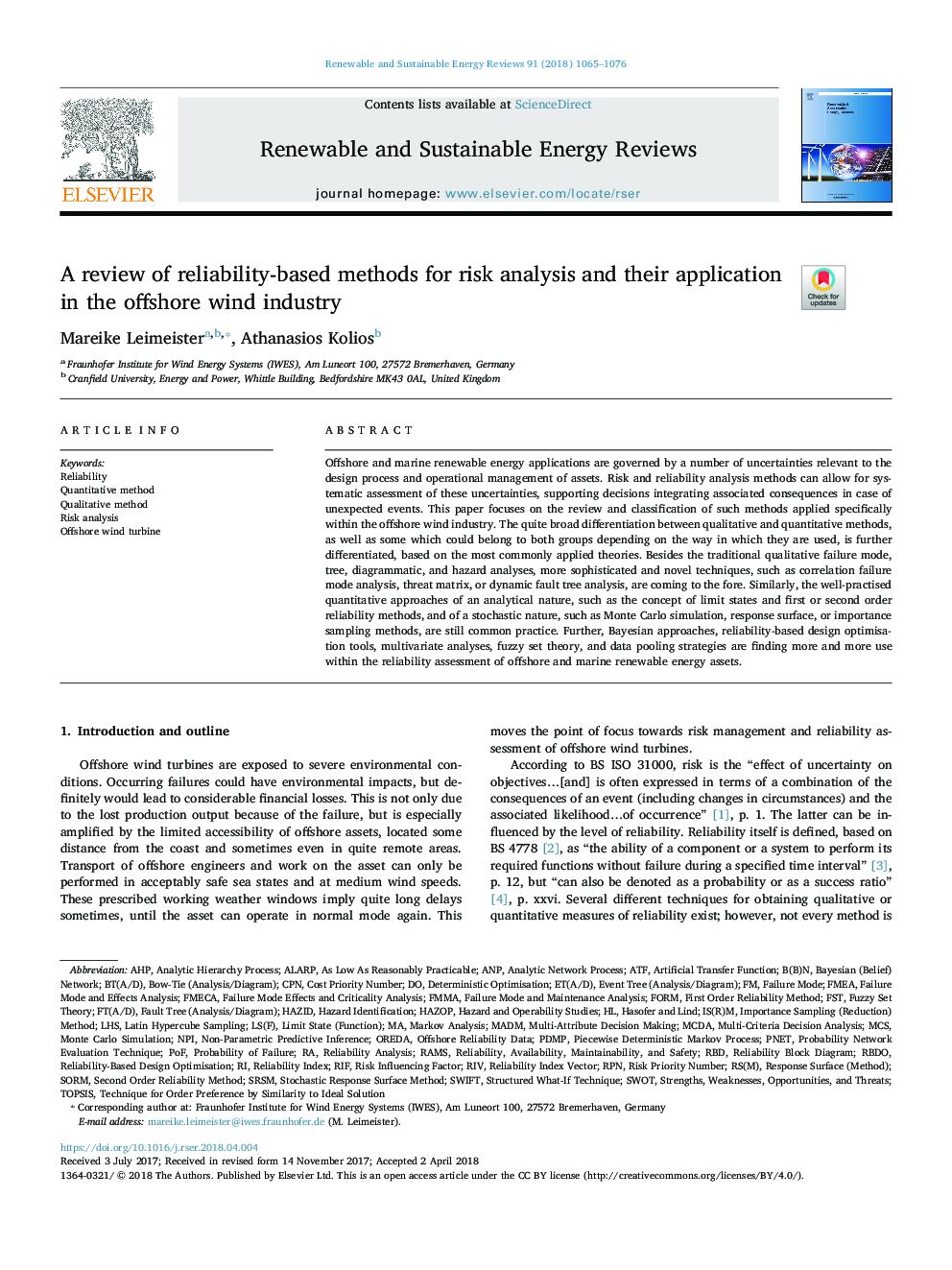| Article ID | Journal | Published Year | Pages | File Type |
|---|---|---|---|---|
| 8111266 | Renewable and Sustainable Energy Reviews | 2018 | 12 Pages |
Abstract
Offshore and marine renewable energy applications are governed by a number of uncertainties relevant to the design process and operational management of assets. Risk and reliability analysis methods can allow for systematic assessment of these uncertainties, supporting decisions integrating associated consequences in case of unexpected events. This paper focuses on the review and classification of such methods applied specifically within the offshore wind industry. The quite broad differentiation between qualitative and quantitative methods, as well as some which could belong to both groups depending on the way in which they are used, is further differentiated, based on the most commonly applied theories. Besides the traditional qualitative failure mode, tree, diagrammatic, and hazard analyses, more sophisticated and novel techniques, such as correlation failure mode analysis, threat matrix, or dynamic fault tree analysis, are coming to the fore. Similarly, the well-practised quantitative approaches of an analytical nature, such as the concept of limit states and first or second order reliability methods, and of a stochastic nature, such as Monte Carlo simulation, response surface, or importance sampling methods, are still common practice. Further, Bayesian approaches, reliability-based design optimisation tools, multivariate analyses, fuzzy set theory, and data pooling strategies are finding more and more use within the reliability assessment of offshore and marine renewable energy assets.
Keywords
ANPPOFNPIPNETFMEAPDMPFSTRBDCPNRIVMCsATFSWOTFMECAALARPMCDAHAZOPLHSMADMSORMRPNRBDOStochastic response surface methodRAMsRisk analysisProbability of failureReliability block diagramAs Low As Reasonably PracticableMarkov analysisMulti-Criteria Decision AnalysisReliability analysisMulti-attribute decision makingOffshore wind turbineTechnique for Order Preference by Similarity to Ideal SolutionFailure mode and effects analysisFailure modeHAZIDSecond order reliability methodFirst order reliability methodTOPSISMonte Carlo SimulationQuantitative methodQualitative methodAnalytic hierarchy processSwiftReliability indexRisk Priority NumberHazard identificationAnalytic Network ProcessAHPPiecewise deterministic Markov processFormReliabilityFuzzy set theoryLatin hypercube samplingRif
Related Topics
Physical Sciences and Engineering
Energy
Renewable Energy, Sustainability and the Environment
Authors
Mareike Leimeister, Athanasios Kolios,
